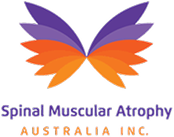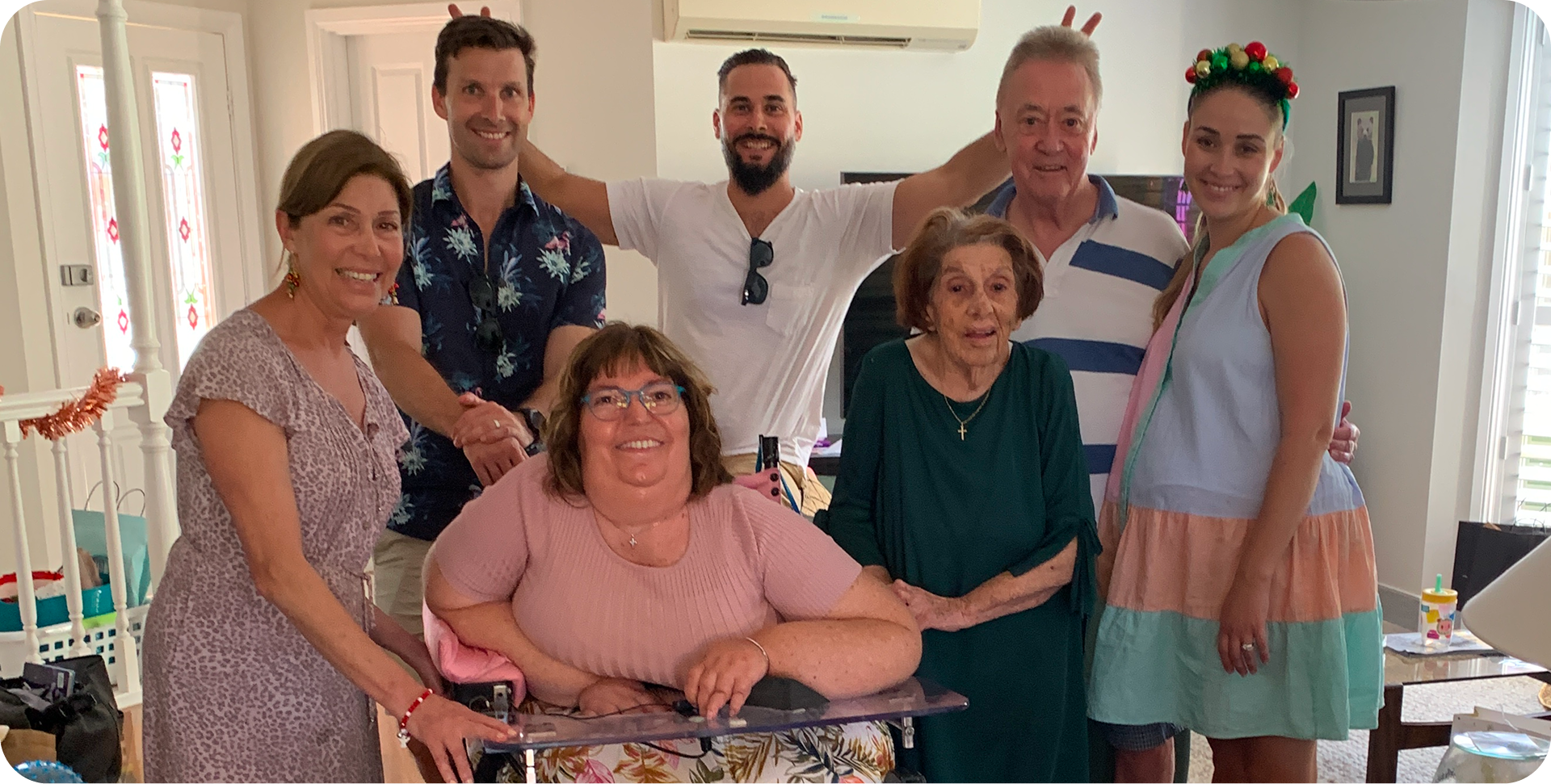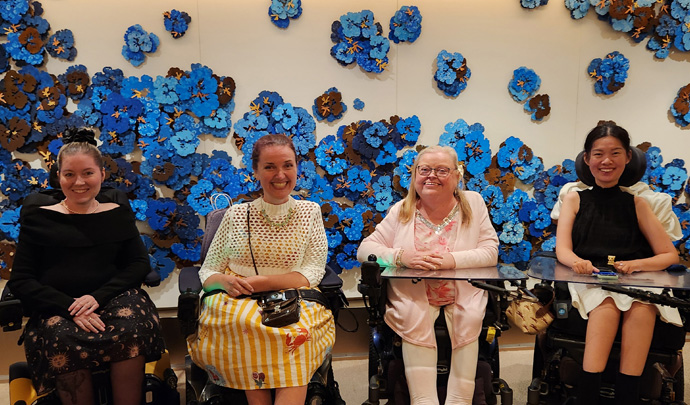
What is SMA?
Screening & Diagnosis
Living With SMA
Treatments
About Us
Contact Us
Back


Your experience with SMA as an adult will vary depending on the type of SMA you are diagnosed with. If you have had SMA since you were a child, you are likely well-versed in the care and support you need. If you have just been diagnosed with SMA as an adult, you may be looking into care and support options for the first time.
Adult-onset SMA, or SMA Type 4, is a rare form of the condition. SMA Type 4 is usually diagnosed between 18 and 50 years old, most commonly after the age of 35. Symptoms may include mild muscle weakness and shrinking (wasting) in the arms and legs, sore muscles, twitches and tremors.
It is much less severe than other forms of SMA: breathing and swallowing muscles are rarely affected, and life expectancy is normal. Some people may have difficulty walking or develop a waddling gait over time, and a few may require mobility aids, such as a wheelchair, as they get older.
There is a variety of support available to help you manage your SMA as an adult. Your multidisciplinary healthcare team can guide you through your options and provide you with personalised advice.

Living with SMA as an adult can mean you need ongoing assistance to help manage your health. If you have had SMA since you were a child, and as you move into adulthood, you may be taking over more of your own health management or relying on support outside of your family for the first time. If you have been diagnosed as an adult, you may not know where to begin. Whatever form your SMA takes, the following areas are important to focus on with your healthcare team:
Speak to your doctor for referrals to specialists who can help you lead a fulfilling life with SMA.
It is important to remember that, while your healthcare professional team is best equipped to diagnose, manage and treat your condition, you are your greatest advocate and the one who knows yourself best. You should feel empowered to speak up, ask questions and ensure you are receiving the best possible care. You can learn more about advocating for yourself here.


Living with SMA should not prevent you from pursuing higher education or finding employment, though it may pose unique challenges.
Further Education
If you are considering pursuing a university degree, TAFE qualification, or similar, these institutions will have a variety of support available to you. Most major educational facilities will have disability advisors, who can help you in a variety of ways: from assistance with enrolment before you sign up for a course or class, to providing adaptations like assistive technologies or notetakers to help you access a class and complete assessments. A great place to start is researching or contacting the TAFE/college/university campus you are looking to attend to learn more about support available and how to access them. It is important to remember, SMA is a physical condition that does not impact your intellectual capability.
Work
Pursuing a career or finding employment when you have SMA may feel daunting, however, there is support available to assist you with challenges you might face and to help you navigate the job search process.
Accessing disability employment services through Services Australia is a useful first step. Career support may also be available to you through your place of study. These services can help you develop specific skills to find work, assist you with preparing a resume or practicing interviews. They can also connect you with employers and provide ongoing support once you are employed to help ensure your workplace meets your needs. Speak to your place of study or contact Centrelink for more information.


Having access to the right equipment is an important part of living well with SMA. If you have been living with SMA since childhood, you are likely well versed in the support you need, though this may change as you get older. If you have been diagnosed with SMA as an adult, the equipment you may need will vary depending on your condition. Having the right equipment can significantly improve your quality of life with SMA. Common examples of equipment include:


Whether driving, flying or taking the bus, getting around with SMA may require some extra planning. Below are some things you may need to consider:
Cars and Public Transport
Access to suitable transport is essential, whether this takes the form of a car you drive yourself, personal transportation services you engage, or accessible public transport you utilise.
Living with SMA does not mean you will not be able to get yourself around. If you use mobility aids, you may need adaptations to help you drive a car, such as modifications to help you get in and out of the car or specialised aids and appliances such as hand controls. An OT can recommend vehicle modifications and equipment to suit your individual needs and help organise any specific driving training and assessments.
If you are unable to drive yourself, or need an alternative option, there are transportation services that can assist you. These include specialised services to transport people living with a disability, however, many rideshare services also have increasingly accessible options, such as the ability to book a wheelchair accessible vehicle. Accessible public transport is also available for you to use. Australian public transport is held to disability standards to help ensure access is equitable. There may be some limitations, as these standards make assumptions about the dimensions, stability and manoeuvrability of your mobility aids. If you are intending to use public transport, planning ahead can be valuable. Visit your state public transport website for further information.
Flying with SMA
Air travel requires some advance preparation, especially if you use a wheelchair or other mobility aid. Here are some tips to ensure a smooth journey:



Your General Practitioner (GP) plays a key role in coordinating your multidisciplinary healthcare team. Your GP is typically your first point of contact when pursuing a diagnosis, and can refer you to necessary specialists, such as a neurologist. Your GP will monitor your condition on an ongoing basis.

A neurologist is often the first specialist you will be referred to if you are showing symptoms of SMA. Your neurologist will manage the diagnosis and treatment of your SMA, and plays a key role in coordinating the multidisciplinary health team.

A respiratory physician monitors your ability to breath effectively and will help address breathing problems that may result from your SMA. They can teach you how to manage symptoms and assist with treatment if you are exposed to a respiratory infection, to which you are more susceptible. These treatments might include medicines or specialised equipment for support.

Nurses in neuromuscular clinics are the primary experts and care coordinators for people living with SMA. They play a critical role in managing your care plan, evaluating your health and monitoring your progress. They also provide advice, guidance and emotional support to you and your family, tailoring information to your individual needs and challenges.

Allied health therapists, including physiotherapists, occupational therapists and speech therapists, can help you preserve and adapt your fine and gross motor movements. They can also help you with any adaptive technologies or modifications you may need, such as a wheelchair or installing ramps at home.

A dietitian can help you tailor your diet to your individual needs and movement limitations. Helping to promote growth and motor function through nutrition is an important way to maximise muscle strength and minimise wasting.

Orthopaedic surgeons treat conditions affecting bones, joints, tendons and ligaments. You may be referred to an othopaedic surgeon to help you with impacts on your body resulting from muscle wasting, such as joint instability.

Genetic counsellors help people understand the likelihood of developing or passing on SMA, by providing access to genetic carrier screening, as well as support and guidance on family planning, and what this means for your extended family.




There are a range of support services available to people living with SMA, their carers and families.

A multidisciplinary healthcare team will support you or your child to live well with SMA. This should includes a General Practitioner (GP) and neurologist, and can also include specialists such as a respiratory physician, dietitian, orthopaedist, physical therapist (physiotherapist, occupational therapist or speech therapist) and genetic counsellor.

Home modifications might be required to accommodate someone living with SMA, such as widened doorways to accommodate a wheelchair, or ramps to assist those with reduced movement. Speak to your occupational therapist for more information.

Most students with disabilities attend regular classes in mainstream schools. Some students may need adjustments in these environments, or to attend support classes with fewer students who require similar accommodations. Depending on your child's individual needs, you might also consider a specialist school (public or private). For some children, a combination of specialist and mainstream schooling works well. Homeschooling or distance education are also possibilities to explore.

SMA Australia brings together a community of people living with SMA and their loved ones, to support people living with the condition through initiatives like peer-to-peer counselling, educate the wider public about the condition, and advocate for access to the best care and latest treatments.
This website is not intended to replace medical advice. Please speak to your healthcare professional for more information.
Join a powerful community of supporters who are helping tackle spinal muscular atrophy at its very core. Our community relies on us for support and best-practice resources to guide them in living well with SMA, as well as for resources to help raise disease awareness, educate others and advocate for people living with SMA in the wider Australian community.
